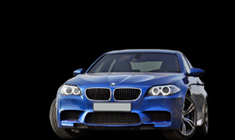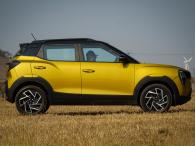News
How I got into sim-racing: Equipment, games & my home setup
Sim-racing is a money pit. Once you step in, the temptation of adding bits to your setup never stops.
BHPian racing_panda recently shared this with other enthusiasts.
Obsessive fancies can take hold of our sensibilities at times, and not addressing them can become debilitating. This pushes some towards reckless thrills like skydiving, or recording themselves dancing in a museum utterly oblivious to the dreary spectacle being foisted upon everyone else and being perceived as possessing the intelligence of a squashed apricot, or online dating; or trying a new restaurant. Some of it pushes towards nerdy pursuits like model making (the Airfix kind), collecting artwork, or sim racing.
This is an account of how I succumbed to the latter.
But first, gentlemen, a short view back to the past.
I have always been what could only be characterised as a nerd, and perhaps a mechanical nerd by some, in every sense of the phrase. As a child, no R/C car or helicopter would survive a month in our house without having its guts taken out and put back together. My sister and I once spent days trying to build a motorised boat, only to haplessly watch it sink like a load of lead despite a trillion iterations. Perhaps the wax-coated cardboard floor with a hole for the motor was not the optimal choice for a hull, but we were only kids. And, as with probably everyone else on this forum, this was the time that the interest in all things with wheels first bud, then flourished on a healthy diet of magazines, books, and TV shows. Then, the discovery of motorsports happened. The colourful tales of ingenuity, heroics - and once you remove the rose-tinted glasses - of histrionics, politics and backstabbing meant that I grew up nursing an intense desire to be involved in it.
But providence does not always conform to your expectations, so as I exited my teens, I stopped daydreaming, and confronted the reality of the dream being just that.
In 2016, I chanced upon sim racing. The discovery was serendipitous; I was ambling through the YouTube feed and saw a video from (the then-nascent) Jimmy Broadbent’s channel. But the elation of re-kindling a fading dream, admittedly in a virtual world, was swiftly subdued by the eye-watering prices of the equipment. There was the DIY route, which although not much less expensive, was at least utterly bewildering. Heartbroken but entranced by the increasingly realistic simulation software and hardware, I kept coming back hoping to, one day, finally have my setup.
Come 2021, Fanatec dropped a bombshell on the industry with a very affordable direct drive wheel. The prices of load-cell pedals were also steadily dropping, making pro-level sim-racing, for the first time, available widely.
For us in India, it was so close but no cigar. Fanatec did not (and does not) sell directly in India. So spending 1-2 Lakhs, and not getting warranty - on a pioneering product produced on a small scale? It was a cul-de-sac.
Things took a happier turn. Enterprising people, fed up with this non-availability while newer brands flooded other markets with similar products, took matters into their own hands. Today, some of the very best in sim racing are available, with a warranty, in India.
The equipment
I brought a Moza R9 wheelbase, the CS wheel, the SRP pedals with the load cell brake, a pedal accessory kit with various springs and dampers, a bucket-ish seat, and an aluminium extrusion frame to mount everything. Everything was brought from Virtual Racing Hub in Delhi.
The R9 is a wheelbase with a peak output of 9Nm. It is extremely smooth, and contrary to some reviews online, I could not feel any ‘notching’ in the middle. It is also very fast. I run with zero damping in the Moza PitHouse software, and during slides, the wheel takes off like a stabbed rat. I was afraid of getting my thumbs injured, but the zero damping conveys every little detail, from road texture, and curb impacts to weight transfer, so well that I have not been able to bring myself to reduce it. The wheelbase is passively cooled, but even in the sweltering Delhi heat, cooling is not an issue.
The CS wheel is, in my opinion, versatile enough for most cars, except probably formula cars. Moza does sell lighter and smaller wheels that are perfect for open-wheelers. There are enough knobs and buttons on the wheel to befuddle most racers. Almost all of my mental capacity is devoted to keeping the car pointed straight, so actuating DRS & changing the brake balance is all I do in-race. But you can always melt your brain by mapping, understanding, and changing many things in-race on cars that support it (diff, engine braking, ERS recovery, the lot).
The SRP pedal is sturdy, and all metal (in fact, on most Moza products, you will be hard-pressed to find any plastics, structural or cosmetic).
The pedal faces are single pieces of brushed aluminium. The brake has a load cell, although, for the life of me, I cannot find the maximum load it can read. On Moza’s website, I have read everything from 75 Kgs to 100 Kgs. Moza also includes an encoder to read the brake angle, and the software defaults to using a combination of the load cell and the encoder output. I find this pointless, like buying a Monet and then hiring a builder to touch up the details. Thankfully, the fusion can be turned off to solely rely on the load cell. The clutch and the accelerator have a solitary spring and do the job. More expensive clutches can simulate the ‘bite-point’ feeling, but this one can not. In the PitHouse software, the input curves can be modified from linear to non-linear to very non-linear indeed.
Lastly, the aluminium extrusion cockpits. They are rock-solid and can easily handle the 9Nm R9 outputs, but barring the seats, which are on rails and can be adjusted as in your car, adjustments are a pain. Want to modify the angle of the pedals? Or the height of the wheel deck? Or its angle? You need 5 arms and the strength of a forklift to stand a chance. And usually, you will need several iterations to find the ideal position for you. By the time you end, you would have broken 3 of your arms and cursed enough to make a sailor blush. Moreover, mine does not have the plastic end-caps to, well, cap the ends of the extrusions. So your face would also be scarred enough to make a sailor blush.
The Game
I bought Assetto Corsa (AC). The full game with all the DLCs could be had for ~1400 on Steam, which is much less than some other, even-arcadey, titles. Assetto Corsa has a mighty modding ecosystem, but to take full advantage of it, the full versions of Custom Shaders Patch (CSP) and Sol are needed. The full versions can be had by donating to the devs, and they open up the game to thousands of high-quality cars, tracks, weather conditions and even skins (you can have a GTA skin too). Even though AC was released in 2014, it is one of the best simulation software.
RaceRoom is another excellent simulator, available with limited free content.
These are the only titles I have used so far. There is no dearth of options, however. Assetto Corsa Competizione (a hardcore GT sim), iRacing (has a subscription model), BeamNG, and Richard Burns Rally are all great from what I have heard.
A lot of sim-racers show incomprehensible disdain towards non-sim titles. I find their arguments ostentatious drivel. Sim software creates an approximation, admittedly good, of the real thing. They are not the real thing. Looking down on those who want to enjoy a stress-free drive is made all the more pointless by the fact that the vast majority of sim racers will never drive a real racecar on a track. So what are you preparing for? And why can those who want not to have some harmless fun?
Final Thoughts
When I bought all this, I thought of myself as the best driver the world had ever seen (don’t we all?). So surely, racing would come naturally and be enjoyable? Right? No. For the first 15 days, I never completed 2 laps without spinning. The car seemed recalcitrant, almost vindictive. The handling seemed capricious, the same inputs in the same conditions seemed to not produce the same results. So much for being the best driver. With time, your brain starts to better model the weight transfer, and you start to guess when the tyres will break traction, and the experience becomes a lot more enjoyable. But it is still not relaxing. Music and peaceful walks are relaxing. Even computer games can be, but I am never on the sim to relax I need to relax after a session. Maybe with time things will change, but this is how they stand today.
Sim racing today is in a great place. The community is small enough that manufacturers can address a large proportion in a fell swoop. A lot of free tools and software are available to add realism (case in point: SimHub - allows adding bass shakers, vibration motors, and Android phone dashboards). The setups are becoming more affordable and the titles more realistic. Racing, a preserve of snobs and aristocrats, is being democratised.
The risks
Sim-racing is a money pit. Once you step in, the temptation of adding bits to your setup never stops. Just a few base exciters. A sequential shifter. A handbrake. Just one more wheel. A better set of pedals. A VR headset. The list goes on and you lust over every new product. But at least it is cheaper than a project car!

Check out BHPian comments for more insights and information.
- Tags:
- Indian
- Member Content
- sim racing

















